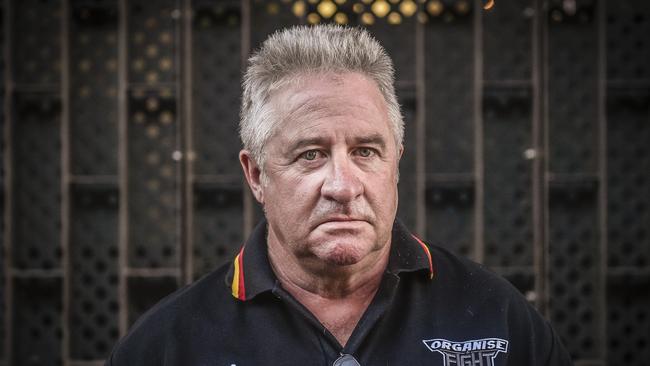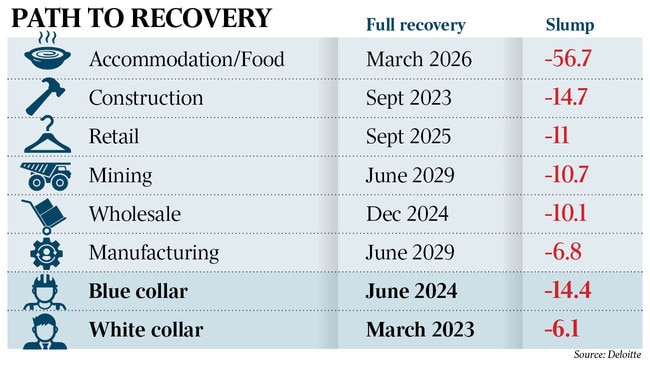Coronavirus: Blue collars to bear brunt of the downturn
The COVID-19 crisis will hit blue collar workers twice as hard as their white collar peers.

The COVID-19 crisis will hit blue collar workers twice as hard as their white collar peers, with employment among the likes of tradies, technicians, chefs and machinery operators collapsing as much as 14 per cent.
It will also be a longer road to recovery for the country’s manual labourers, with blue collar employment not expected to return to pre-crisis levels until mid-2024, more than 18 months after white collar work regains its peak, according to a new report by Deloitte Access Economics.
Deloitte partner David Rumbens said the pandemic’s impact on white collar jobs was more mixed, reflecting his prediction for a 6 per cent drop in these types of roles. “Some sales and clerical jobs have been hit very hard, but there are also jobs not affected like public administration,” Mr Rumbens said. Clerical jobs in relatively unscathed sectors such as telecommunications and health and community service have also held up relatively well.
Blue collar jobs, in contrast, tended to be clustered in some of what Deloitte believes will be some of the hardest hit segments of the economy, such as transport and construction.
While construction has been relatively resilient, Mr Rumbens said he expected the biggest hit to blue collar labour in the coming months would be in this sector, as new projects failed to come online.
The Deloitte economist predicted a peak-to-trough fall in construction employment of 15 per cent because of the crisis, and that it would take more than three years for industry employment to recover to pre-pandemic levels.
A quarter of jobs in the transport and storage sector will eventually disappear, the analysis shows, and a return to previous levels won’t happen until mid-2026.
CFMEU construction national secretary Dave Noonan told The Australian he hadn’t seen a “big rush” of job losses in the sector “but we are starting to see some”.
“We are aware of some projects which are not proceeding or are in doubt,” Mr Noonan said.
Master Builders Australia chief Denita Wawn said the forward book for the industry group’s members was “fast evaporating”.

Master Builders and the Construction Forestry Maritime Mining and Energy Union have called on the Morrison government to implement a $10bn social housing fund, a measure Ms Wawn said was “essential to save jobs and the viability of nearly 400,000 small businesses that make up 98 per cent of the industry”.
Mr Noonan was hopeful projects would come back on board when the economy began to recover. As part of its emergency support measures, the government announced a $1.3bn package aimed at helping 70,000 businesses keep about 117,000 apprentices through the downturn.
Employment Minister Michaelia Cash said it was “critical to have a fast-moving and flexible vocational education and training sector to reflect the changing needs of the economy”.
“We do not underestimate the challenge ahead; we are continuing to reform the VET sector so it is able to move with the needs of the economy and get more Australians into work,” she said.
The opposition’s employment spokesman, Brendan O’Connor, said the government needed to do more work on assessing the impact of COVID-19 on different sectors and demographics of the labour market, “and to respond with a plan”. “We can’t forget about Australia’s hard-working blue collar workforce, who despite the Prime Minister’s belief the economy will miraculously ‘snap back’, will actually face years of hardship,” Mr O’Connor said.
The Deloitte report said as with construction, conditions for white collar workers in the finance sector were likely to deteriorate in coming months as the downturn triggered a sharp rise in bad debts and weighed on banking profits.
The analysis also outlined a blow to workers in the hospitality and arts and recreation industries. From peak-to-trough, jobs in both sectors will halve, recovering to pre-COVID levels by mid-2026.




To join the conversation, please log in. Don't have an account? Register
Join the conversation, you are commenting as Logout